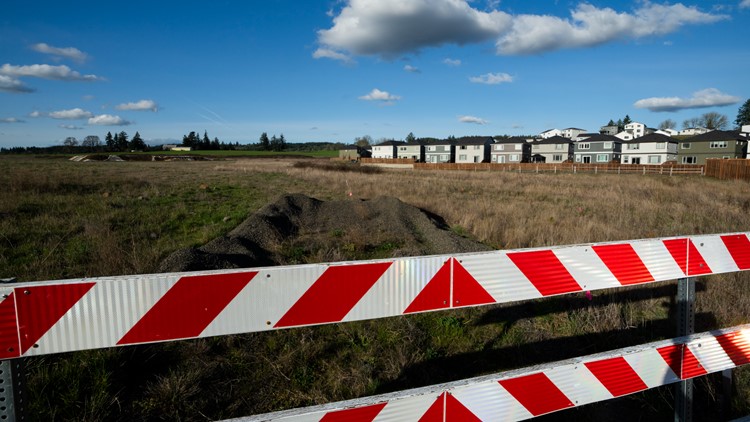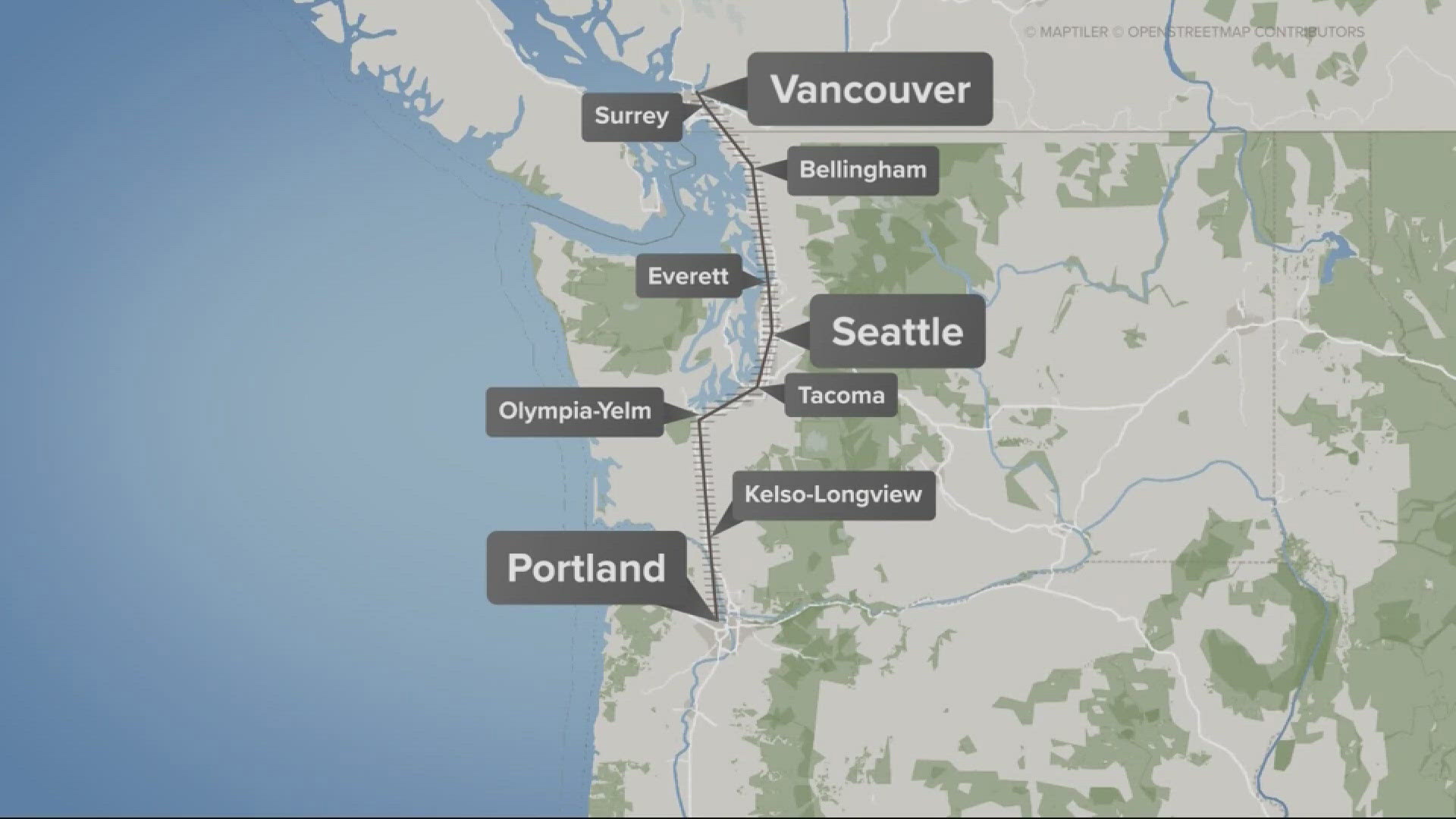PORTLAND, Ore. — A severe lack of affordable housing has prompted Oregon lawmakers to consider chipping away at a 1970s law that made the state a national leader in leveraging land use policy to prevent suburban sprawl and conserve nature and agriculture.
The so-called urban growth boundary, a sacred cow of Oregon's liberal politics, helped to cement the state's green reputation and has been "extremely influential" in its development, said Megan Horst, an urban planning professor at Portland State University.
"I can't overstate it," she said of the half-century-old law. "All that farmland would likely be a sea of strip malls and subdivisions, as they are pretty much anywhere else in the country."
But interconnected homelessness and housing crises have forced exceptions to be considered by lawmakers, including Democrats who have historically defended the landmark policy.
The sole bill introduced by Democratic Gov. Tina Kotek during this year's short legislative session is a sweeping housing package aiming to jumpstart home construction by tweaking the 1973 law, which essentially drew a circle around cities to protect farmland, forests and nature from urban encroachment.
Lawmakers have just two weeks to approve the bill before the session ends March 10.
As the longest serving speaker of the Oregon House, from 2013 to 2022, Kotek became known for her progressive agenda. But as governor, she has sought to ease restrictions for developers in a bid to advance her housing production goals.
Working to win support for the package has put her in the unusual position of having to lobby not Republicans — who largely back it — but members of her own party, many of whom voted against a similar measure last year. Kotek said she spent the seven months between legislative sessions speaking with lawmakers, housing developers and conservation groups to find a middle ground.
"We had some proposals last year that didn't work for everyone, but we didn't walk away. We sat down and worked on it," she said while testifying in support of the bill, describing herself as its "chief architect" and "chief cheerleader."
"I also know that the process means there might be amendments," she added. "But what we can't see happen is that this Legislature leaves at the end of their session without this bill."
On the ground, the anti-sprawl policy can look dramatic. At times, blocks of dense apartment complexes abruptly end and give way to thick forest or rolling fields. One side of a road can be lined with homes, while the other side features open space as far as the eye can see.
The 42-page package would, among many other things, grant a one-time exemption to the decades-old rule by allowing cities to acquire new land for the purpose of building housing. It would require 30% of new units in expansion areas to be affordable.
Currently, cities must forecast population growth over 20 years before requesting to change an urban growth boundary for new homes, businesses or industrial or public facilities. If they show the area inside their boundary won't accommodate projected needs, and identify outside land meeting a complex set of criteria, they can apply to expand.
Cities of more than 2,500 residents seeking to add more than 50 acres (20 hectares) must submit an application to a state agency for approval.
Ninety-five percent of such adjustments were approved between 2016 and 2023, according to the Department of Land Conservation & Development, the agency tasked with approvals. But many cities and developers say the rigorous evaluation and analysis requirements can be long and difficult to navigate.
"While land supply is not a barrier for all cities, it is critical for some, and the current ... process is time-consuming, cost-prohibitive, and litigious," Ariel Nelson, a lobbyist for the League of Oregon Cities, which has a neutral stance on the bill, said in written testimony.
To speed up the process, the bill before lawmakers would ease certain regulations and waive the 20-year population forecast if conditions are met. But the proposal still includes a number of restrictions largely stemming from Democrats' requests.
In order to be eligible, cities must prove they lack land as well as affordable housing. They would need to outline the history of their growth boundary in the previous 20 years and assess how much land inside the current boundary has been developed. They would also have to show that a certain percentage of households are severely cost burdened, meaning they spend more than half of their income on housing.
In most cases, cities wouldn't be able to add high-value farm or forest land.
Additionally, cities would only be able to add relatively small areas of land: cities with populations less than 25,000, for example, could only add a maximum of 50 "net residential" acres (20 hectares), which is less than one-tenth of a square mile (0.3 square kilometers). A net residential acre refers to the amount of land used to build homes, excluding streets and utilities.
The one-time exemption to urban growth boundary rules would expire in 2033.
State Sen. Deb Patterson, a member of the Environmental Caucus and the Senate's housing committee, said these guardrails made her feel comfortable supporting the bill. She was one of the Democratic lawmakers whose "no" vote killed last year's proposal.
"While it's not in any way shape or form a perfect bill, so much work has been done to make this a much better bill that I do believe I will be a 'yes' vote," she said.
One of her Republican colleagues on the Senate's housing committee, Sen. Dick Anderson, also supports the bill but said the boundary expansion rules were restrictive "almost to the point of not being of use."
"You should not be envisioning a Las Vegas or Phoenix style expansion, with houses galore and subdivision after subdivision," he said.
Anderson thinks other parts of the bill would be more useful in his coastal district, specifically a measure allowing cities to "swap" land currently within their boundaries, which is harder to be develop because of steep terrain or other topographical issues, with an equivalent amount of land just outside that is more suitable for residential use.
Other factors also have to be addressed in order to fully tackle the crisis, such as rising construction supply costs, a labor shortage and increasing corporate ownership of housing, housing experts say.
Lawmakers have tackled the land use law in the past, including to spur industrial growth. Most recently, they approved a measure last year allowing the governor to designate up to eight sites for expansion to make room for semiconductor factories.



